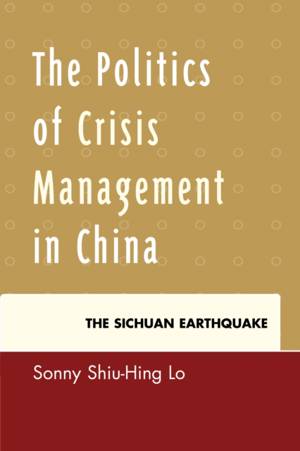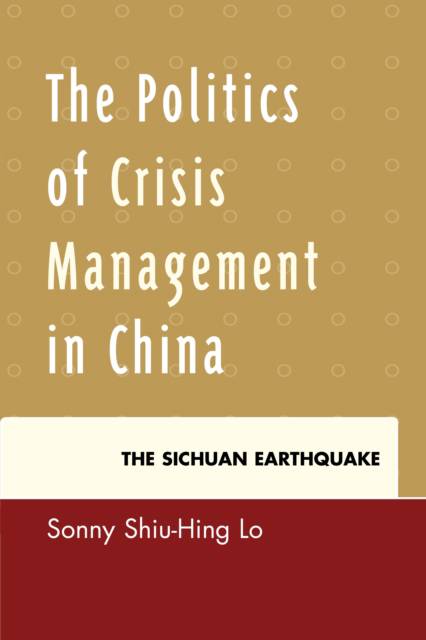
- Afhalen na 1 uur in een winkel met voorraad
- Gratis thuislevering in België vanaf € 30
- Ruim aanbod met 7 miljoen producten
- Afhalen na 1 uur in een winkel met voorraad
- Gratis thuislevering in België vanaf € 30
- Ruim aanbod met 7 miljoen producten
Zoeken
The Politics of Crisis Management in China
The Sichuan Earthquake
Sonny Shiu-Hing Lo
Hardcover | Engels
€ 183,45
+ 366 punten
Omschrijving
This book analyzes the ways in which the Chinese government and military responded to the 2008 Wenchuan earthquake in Sichuan province. It adopts a comparative and historical perspective in studying the responses of the Chinese government in the first critical 72 hours, the mobilization of the People's Liberation Army and its difficulties, the assertive and important role of the non-governmental groups which established a partnership with the state in the rescue operations, and the process and politics of reconstruction. The book is rich in materials, including comparative case studies of the Tangshan earthquake in 1976, the outbreak of the Severe Acute Respiratory Syndrome in 2003, the earthquakes in Haiti, Chile and Myanmar, and the contrasts with the Japanese earthquake tsunami in 2011. Researchers, government officials, policy analysts, seismic specialists, journalists and students will find this book extremely useful, conceptually insightful and practically policy-relevant.
Specificaties
Betrokkenen
- Auteur(s):
- Uitgeverij:
Inhoud
- Aantal bladzijden:
- 162
- Taal:
- Engels
Eigenschappen
- Productcode (EAN):
- 9780739139523
- Verschijningsdatum:
- 14/11/2014
- Uitvoering:
- Hardcover
- Formaat:
- Genaaid
- Afmetingen:
- 155 mm x 229 mm
- Gewicht:
- 385 g

Alleen bij Standaard Boekhandel
+ 366 punten op je klantenkaart van Standaard Boekhandel
Beoordelingen
We publiceren alleen reviews die voldoen aan de voorwaarden voor reviews. Bekijk onze voorwaarden voor reviews.











